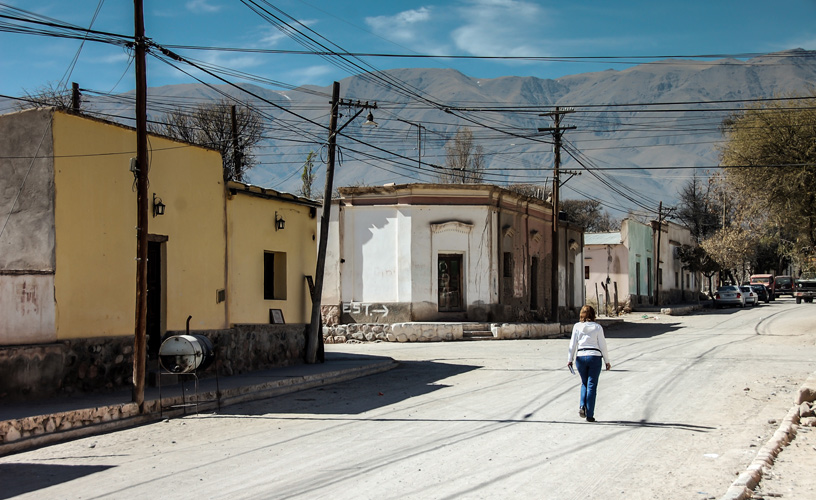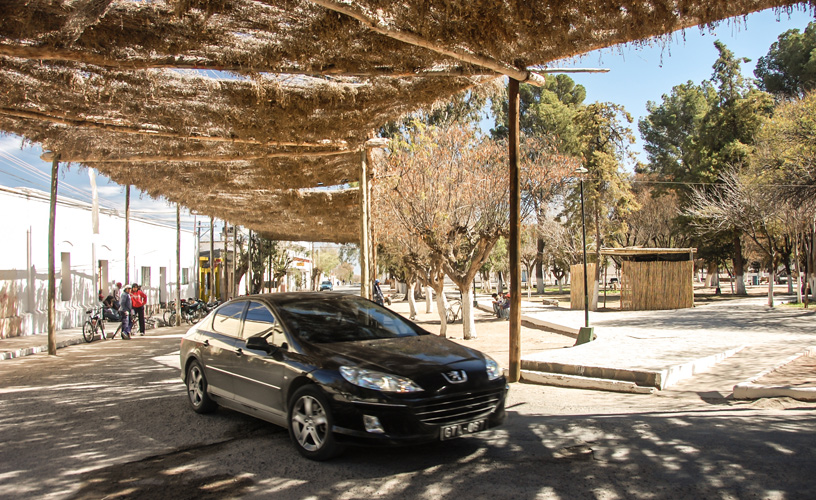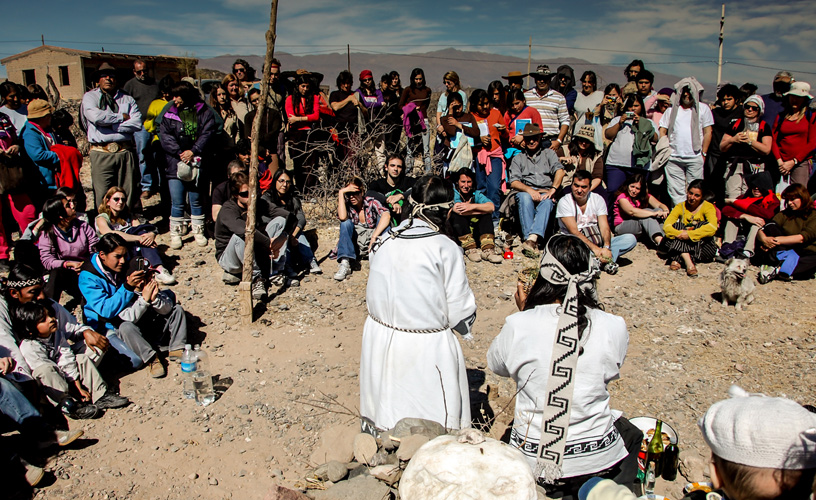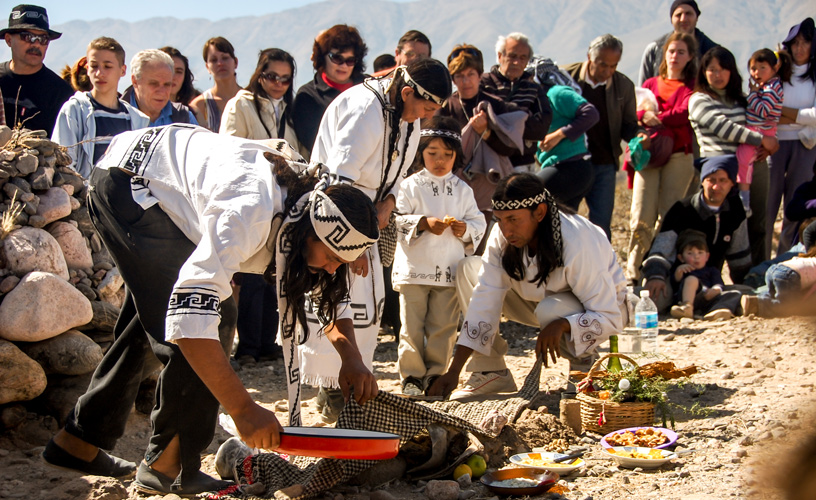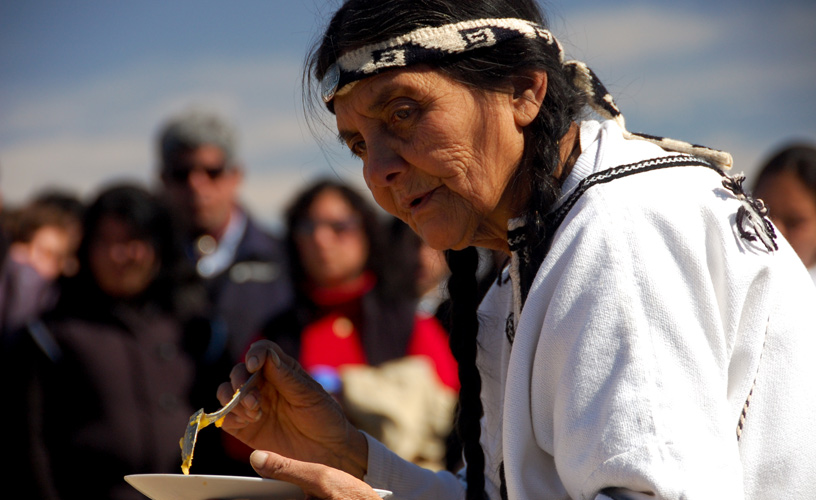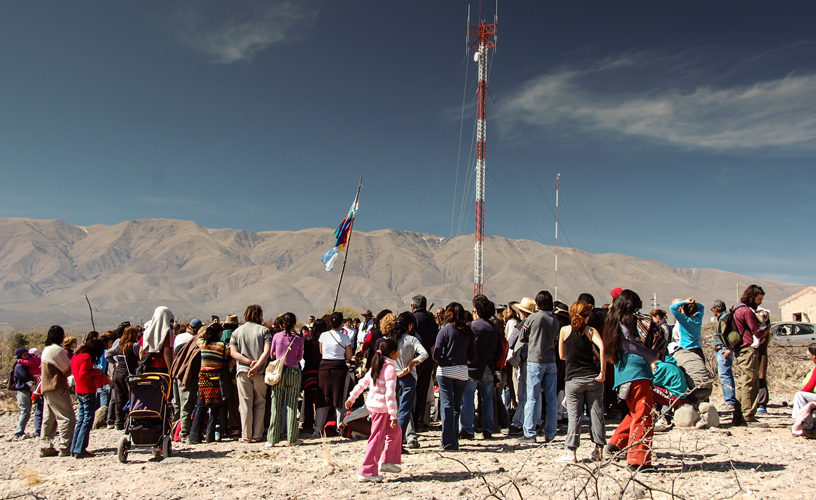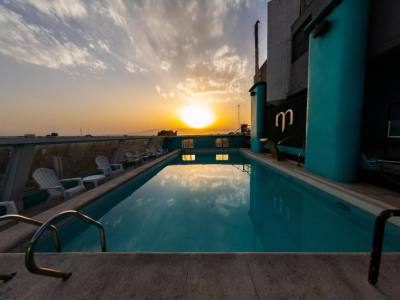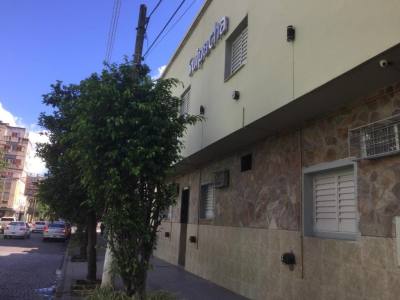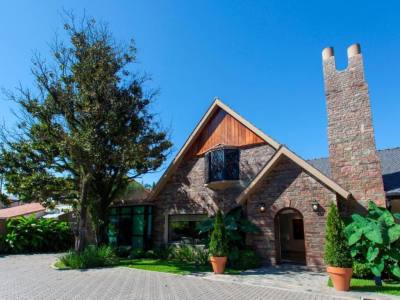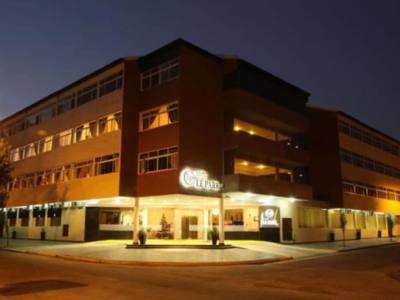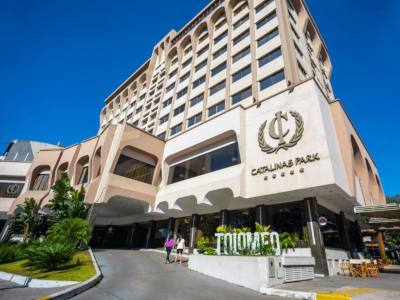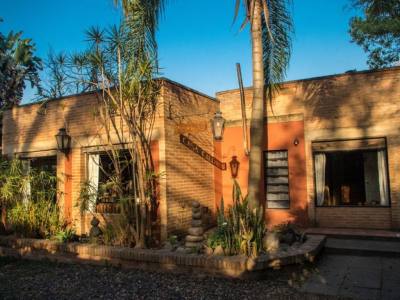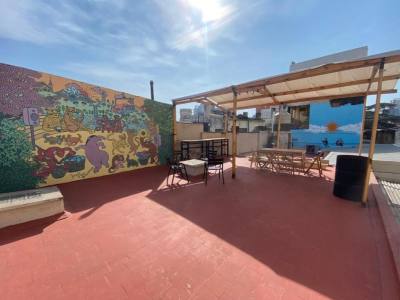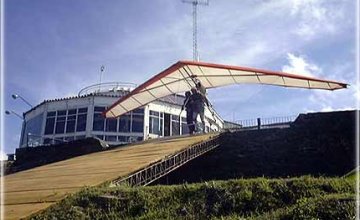We discovered the essence of an indigenous people that still preserves its family tradition to offer their appreciation to the Earth for the goods provided and to beg for the fertility of animals and crops.
The Calchaquí Valleys are so fascinating that they invite visitors to hit the road towards Amaicha del Valle just for the sake of beholding its landscape.
Encouraged by our friends in the area, we left San Miguel de Tucumán by car following National Route 38 in the direction of Acheral. We turned into Provincial Route 307, which climbs through changing sceneries and gets into the rainforest in Los Sosa River Natural Reserve and leads to the monument called El Indio (the Indian), were we made a stop and had a look at a very interesting handicrafts market.
From that point onwards, vegetation became scarcer and we passed through El Mollar, Los Menhires Reserve, Tafí del Valle and Abra del Infiernillo, the highest point in the road, 3,042 m.a.s.l.
After traveling along 164 kilometers at 2,200 meters of height, we reached Amaicha del Valle, but the Calchaquí Valleys continue up to the Quilmes Ruins and Colalao del Valle.
A Town of Cardons, Chañar and Algarrobas
As we entered Amaicha del Valle, we were first impressed by its aridity, its streets of dirt, its low houses with cardon roofs and very few people at sight. A solitary hidden town.
As we advanced along its streets, we began to discover its people and its craftsmen. We saw the square, the handicrafts market and its famous Museum of Pachamama. We perceived that something stronger dwelled this city in Tucumán: the roots of its inhabitants were very strong and deep into their origin.
We learned that the Amaichas were the only Diaguitas recognized as a native community by the Spanish crown. Long before the Spaniards arrived in the region, these people would share these territories with other Diaguita tribes on excellent terms. They lived in harmony. Today, their descendants live in this area.
Tribute to Pachamama
August is devoted to the traditional Pachamama Festival. An offering is made to Mother Earth on the first day of this month.
Even if in former times these ceremonies would be held privately within the community, at present they are open for all those who wish to learn about these rites. Maybe this is a way of showing their habits and avoiding discrimination.
We had the chance to be present on that opportunity and we headed for the place where the offering would be carried out. On an elevated ground, with Argentinian and the native community flags, a small group explained the pride they felt for the cultural values inherited from their elders.
The chief told us that the families have a special place in their houses where they pay tribute to Pachamama. After digging a well, presents made up of their favorite dishes are placed inside, namely: chicha, coca, wine, corn, quínoa, seeds, fruit, etc. That act is an offering to give thanks for the goods received from the Earth and a prayer for everything expected for the following year.
Afterwards, people eat, drink and celebrate with music and verses. Nobody misses that date. Adults and children of all ages attend the event. The celebration lasts one week and there are wives meetings, handicrafts market, dancing with bandoneón, guitar and bombo. They welcome folklore bands from Northwestern Argentina and everything is celebration. The representative of Mother Earth is chosen among the eldest women in the tribe.
In February, during Carnival, honor is also paid to Pachamama with similar revels.
Everything is Homemade
The making of foot-pressed wine (mistela and eau de vie) is, along with textiles woven by hand, the greatest wealth of this community. So are its turrones, alfajores and quesillos. The women produce natural yarns made with sheep and llama wool and used to weave ponchos, peleros, blankets and tapestries.
Near Amaicha, at the area surrounding Los Zazos Dam, we saw a group of copleras, women who sing about tradition, love and daily life. We were invited to share a family evening with them.
Visitors should dare to discover Amaicha’s hidden charm which only uneasy hearts can find.
Opening the Way
In addition to all its benefits, Amaicha has a spectacular microclimate and the wishes to go on some of the hiking and moutaineering circuits in its surroundings, Amaicha has a spectacular microclimate.
Just 10 km away from Amaicha, there lies the Ampimpa astronomic observatory. Clear skies free of all contamination and light pollution provide optimum conditions for observation.
We left Amaicha del Valle with the pleasure of having seen an almost unexplored town. Just a few inns, camping sites and cabins represent the accommodation options for tourists.
As a personal remark, we discovered that it is not good to use only the eyes. The other senses must also take part to discover these treasures of the peoples in Northwestern Argentina.
Mónica Pons
Eduardo Epifanio
